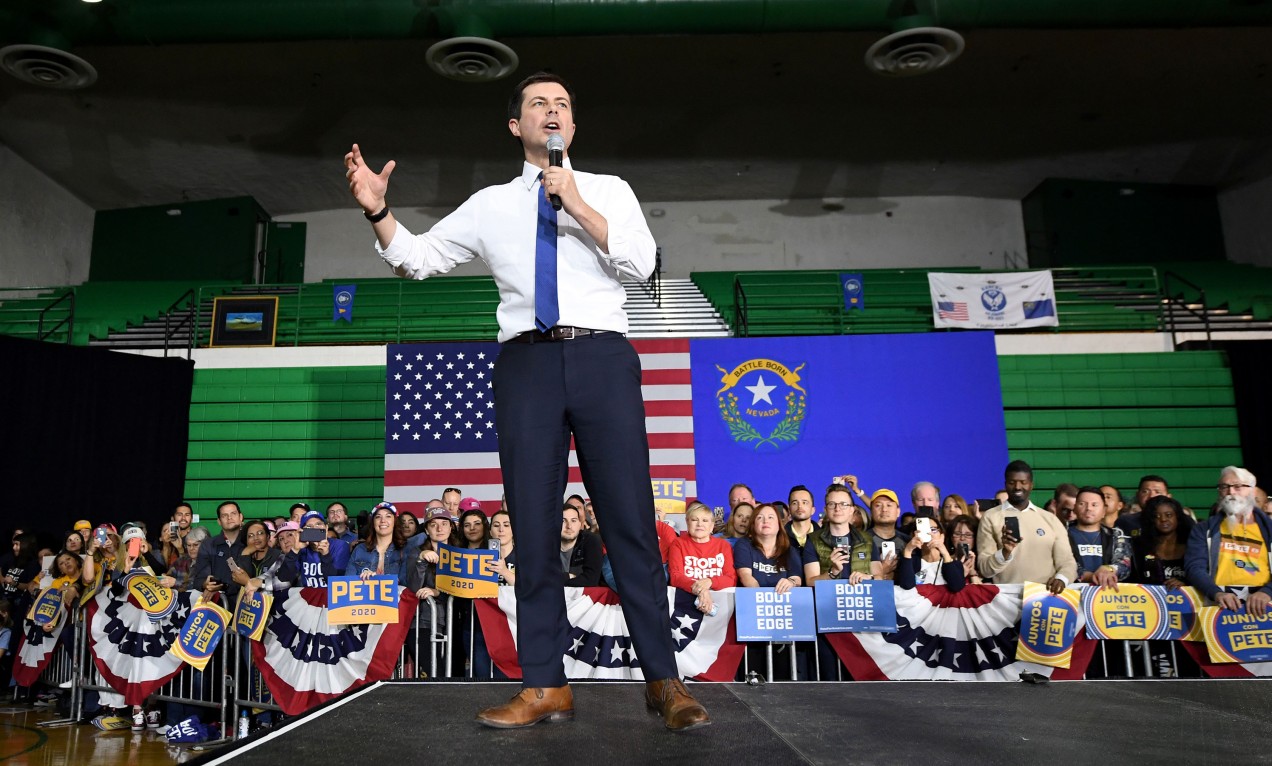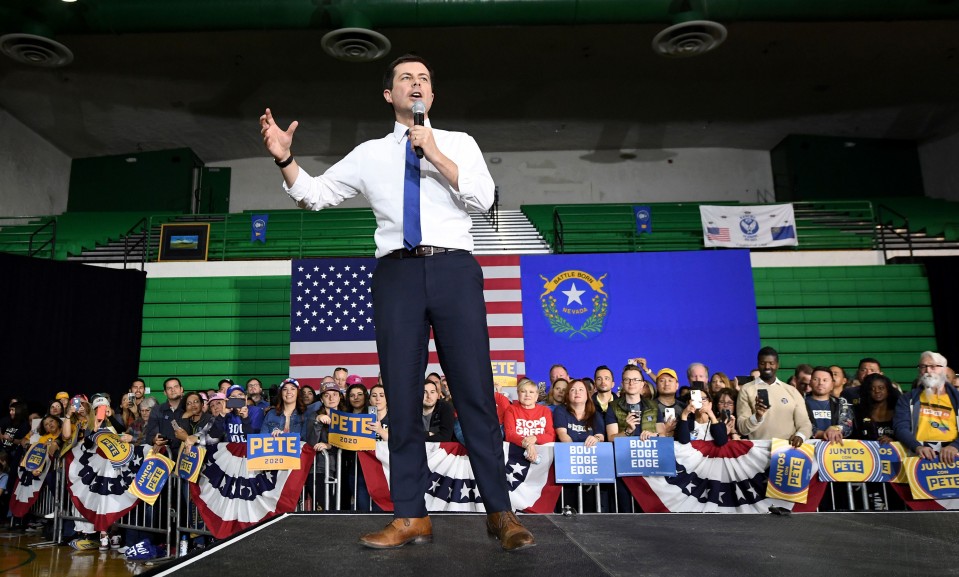

Election 2020
Pete Buttigieg’s $2 trillion climate plan is infeasible, but less so than most
The Democratic presidential candidate has adopted more favorable views of fracking, nuclear, and carbon removal than his more progressive rivals.

Election 2020: The 2020 US presidential election is a critical moment for politics, technology and policy-making. We cover everything from secure voting systems and disinformation campaigns to the future of jobs and plans to combat climate change.
Democratic presidential candidate Pete Buttigieg hasn’t put forth the most radical climate proposals in the field. He isn’t pushing for the highest government spending, the tightest time lines for slashing greenhouse-gas emissions, or a major expansion of federal electricity generation.
But the former mayor of South Bend, Indiana, has nevertheless advanced an ambitious, carefully designed plan that is arguably more pragmatic than anything promoted by his more progressive rivals. It incorporates a broader suite of the technologies that may be crucial for rapidly and affordably cutting emissions, and strives to secure broader public and political support—or, at least, to make fewer enemies.
Buttigieg’s $2 trillion plan would quadruple federal funds for research and development on clean energy over the next decade, and commit $250 billion to finance construction of related infrastructure projects, primarily in poor neighborhoods. It would direct the same amount to help impoverished nations build clean energy and climate adaptation projects, relying on exported US technology.
He would recommit the US to the Paris climate agreement, eliminate fossil-fuel subsidies, and halt new oil and gas leases on public lands. And he’d extend or create tax credits for renewables, energy storage projects, and modern transmission lines.
Unlike Senators Elizabeth Warren and Bernie Sanders, Buttigieg is not calling for an immediate ban on natural-gas fracking, sidestepping a measure that would prove deeply divisive—and economically damaging—in swing states with major gas industries, like Pennsylvania. Some energy experts also believe a sudden shutdown would have an unfortunate unintended effect: prolonging the life of the dirtier coal plants that natural-gas plants have been forcing offline.
Buttigieg’s plan also takes pains to help the heartland make the leap to cleaner industries and prepare for coming climate dangers, like the historic flooding that has devastated his own city in recent years. On his agenda: paying farmers for shifting to practices that store more carbon in soil; providing training and other assistance for workers displaced by the transition from fossil fuels; and investing in infrastructure projects to bolster protections against climate disasters across rural America, just not in coastal cities threatened by sea-level rise.
Buttigieg is the only remaining candidate in the field pushing hard for the aggressive rollout of machines that can remove carbon dioxide from the atmosphere—and for developing ways to put that carbon to use, and effectively store it, in car parts, building materials, and other products. Most climate research now finds that in addition to rapidly cutting emissions, we’ll need to draw down huge amounts of greenhouse gases to avoid really dangerous levels of warming.
Here are Buttigieg’s positions on other key energy issues.
Electricity: His plan would double the nation’s clean energy generation by 2025, and achieve zero emissions from the electricity sector by 2035.
Vehicles: All new passenger vehicles would have to meet the zero-emissions standard by that same year, while all new heavy-duty trucks, buses, trains, ships, and aircraft would need to be carbon-free by 2040.
Other industries: The agriculture, manufacturing, and industrial sectors, including steel and concrete production, would have to reach net-zero emissions by 2050.
Carbon tax: Buttigieg is calling for an annually rising carbon tax that would apply to climate polluters in every sector of the economy. But he wants to soften the blow of any resulting price increases by rebating the money to low- and middle-income households through dividends.
Nuclear: Buttigieg’s campaign told the Washington Post that he’s not in favor of new nuclear plants. But unlike Warren and Sanders, he’s not calling for the phase-out of existing facilities, which remain the nation’s largest source of carbon-free power.
“What we’ve got to care about most is cutting CO2 emissions and, at least for now, nuclear is part of that,” he told the Boston Herald last spring.
Feasibility and risks: A roughly $2 trillion plan may be a lot more feasible than, say, Sanders’s more than $16 trillion one, but it’s still not especially likely to pass, short of major shifts in political power in Washington, DC, and stronger demands for bold action from the public.
Republicans may get on board with some of these proposals, including innovation funding, direct air capture, and not immediately shutting down nuclear and fracking operations. But businesses will certainly oppose plenty of the other expensive and ambitious proposals, including that rising carbon tax and the 15-year deadline for zeroing out emissions in the power sector.